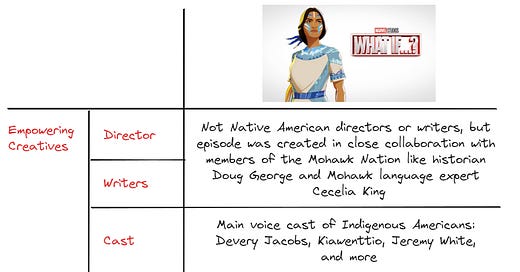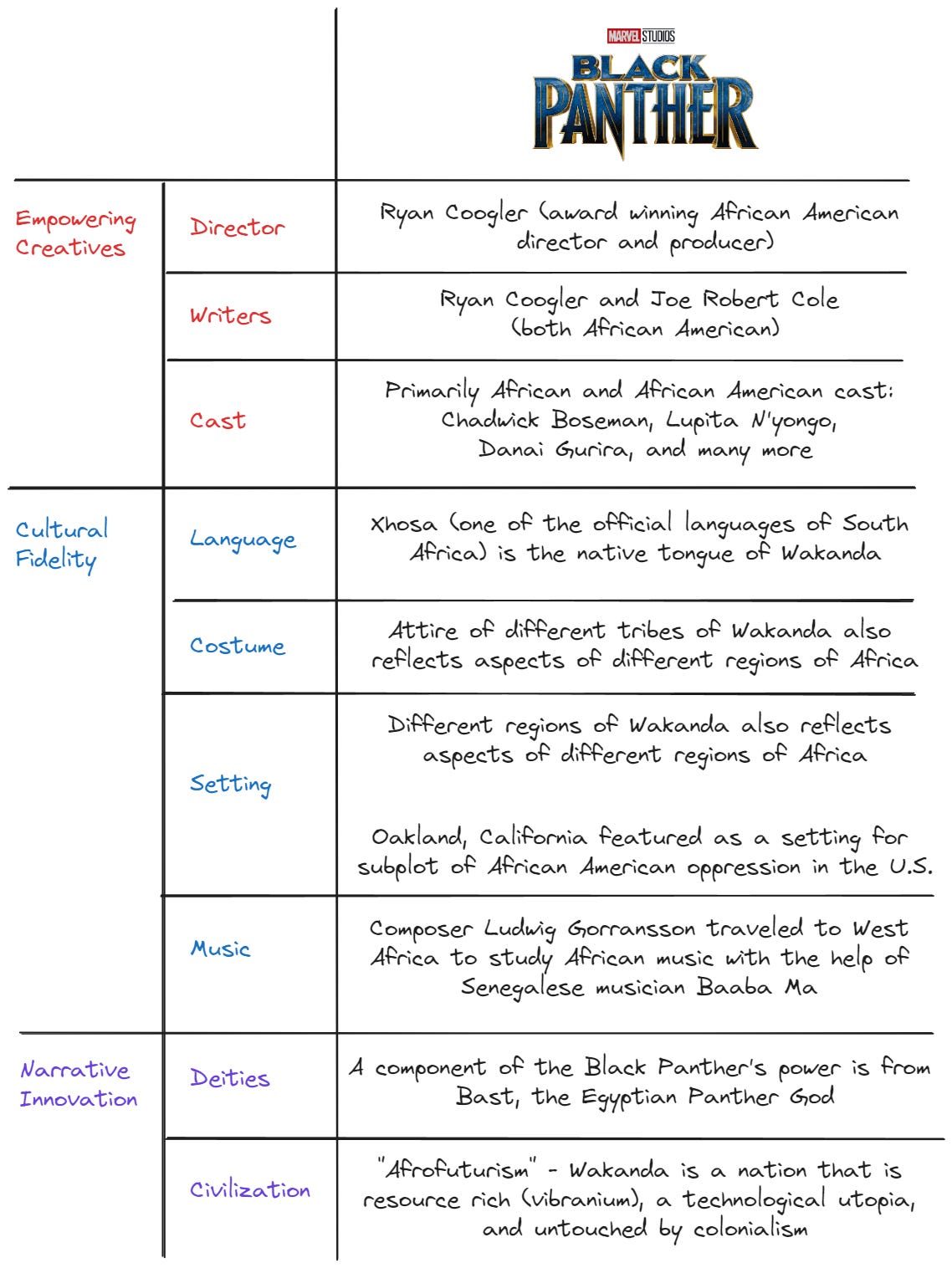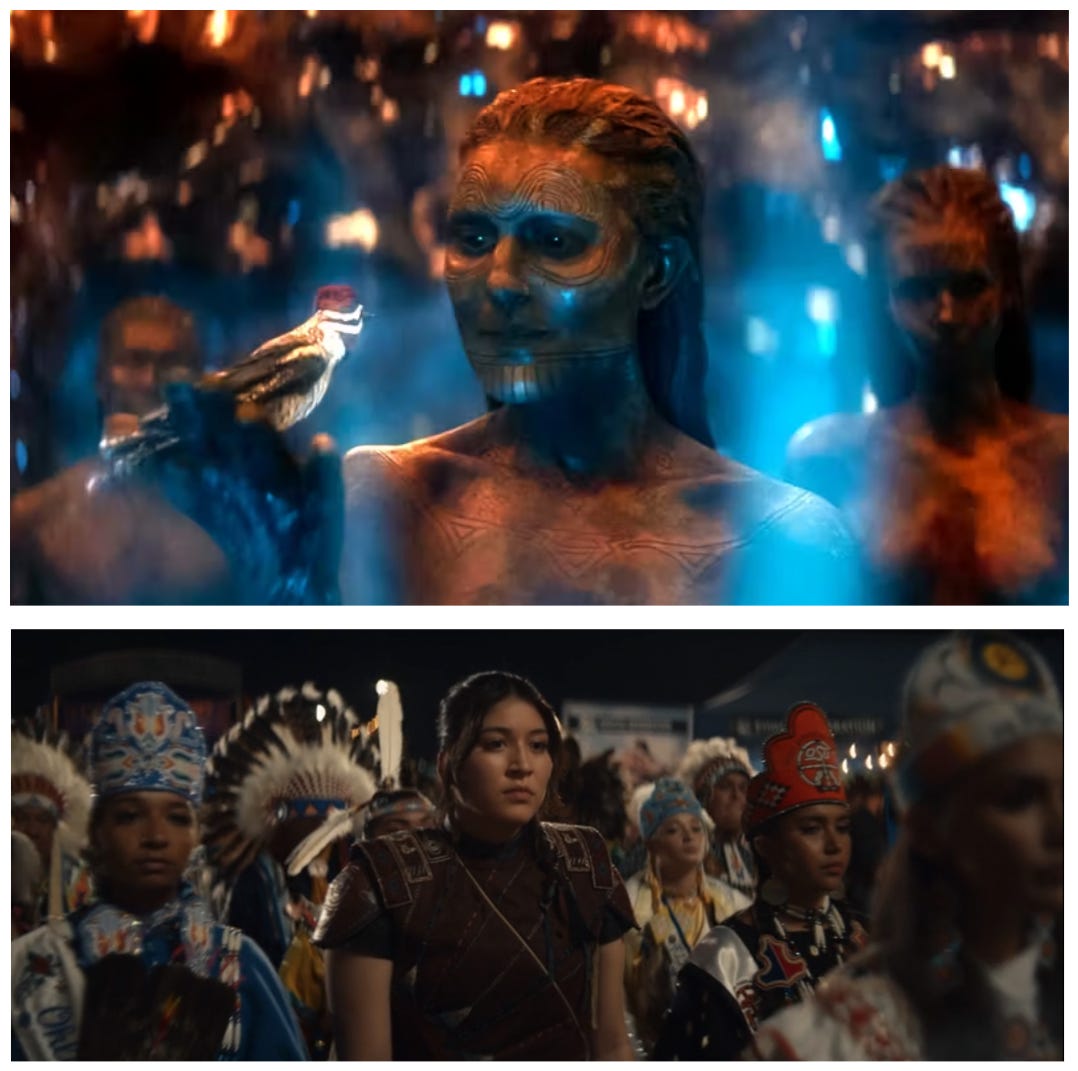The Marvel Cinematic Universe’s Indigenous Bet
Reaching new audiences with Native American superheroes
*Warning this article contains minor spoilers for What If…? Kahhori Reshaped the World and Echo
Representation matters. Representation also means new markets.
The Marvel Cinematic Universe (MCU) has continued its trend of creating new cultural corners in an attempt to expand into new demographics and craft innovative stories. In the span of less than two weeks, the MCU premiered two projects built around Indigenous American superheroes on Disney+: Kahhori (pronounced Kah-horti) in What If…? Kahhori Reshaped the World, an episode in the MCU’s animated anthology series that tests speculative concepts, and Maya Lopez as Echo in her own titular live action miniseries, Echo.
The MCU has long been criticized for oversaturating the entertainment industry. One way to address an oversaturation of your core market is to leverage your capabilities to enter new markets, which in this case coincides with increasing representation for underserved fans. It’s an opportunity to access new geographies, demographics, audiences, and customers. The MCU has been attempting to tap into underrepresented cultures for a while now with several movie and TV properties: African and African American (Black Panther), East Asian (Shang-Chi and the Legend of the Ten Rings), and South Asian (Ms. Marvel). The MCU’s most recent foray is into Indigenous American or Native American culture.
Heroes and deities are sacred cornerstones of so many cultures in our world. Arguably the concept of a “superhero” has existed since ancient times. The comic book genre has certainly embraced this idea, look to Marvel with its usage of Thor and Norse mythology, and DC with Wonder Woman and Greek mythology. This genre can be an effective conduit because it celebrates heroes, and is a canvas for all types of characters and cultures. How literal the mythological representation is will vary across the genre, but more importantly is if these interpretations are respectful, because that is paramount to innovating new stories that resonate with fans.
Now there may be criticisms of the MCU being responsible stewards of any cultural expansion strategy. Currently, the MCU is the franchise with the broadest reach to propagate these stories into the mainstream, and the most resources to bring these projects to life. However, the lynchpin to success is ensuring authenticity at every level to truly connect with the audience. Or risk fan backlash resulting in the entire strategy backfiring and hurting the studio financially. Thus far, there are strategic elements that the MCU has been able to execute on to ensure authenticity.
Hopefully, this brings about further normalization of cultural representation in the superhero genre and a willingness to invest in more of these types of characters, stories, and mythologies.
Blueprint with Black Panther
The MCU’s first foray into cultural expansion was Black Panther. Here, Marvel Studios began prioritizing cultural authenticity by empowering the creatives in charge of the movie’s development to holistically infuse each element of the movie with cultural fidelity and to innovate in the superhero genre.
Director Ryan Coogler and his team made several pilgrimages to Africa to ethnographically immerse themselves in customs and traditions for the film (if you’re interested I wrote a bit more about this in a previous post - The Sacred Timeline - MCU: The Reign of Marvel Studios). The results speak for themselves as the movie has been highly celebrated for its fantastical unapologetically Black universe. To this day, Black Panther is one of the MCU’s largest commercial successes grossing over $1.3 billion globally, and returning over 6.7x of its production budget.
As a case study, there are three key strategic pillars that Black Panther showcases as a framework for understanding how Marvel Studios is approaching cultural representation.
Empowering Creatives - From the development team, cast, and bringing on subject matter experts, the people of the culture you’re trying to appeal to need to be involved on as many levels as possible
Cultural Fidelity - Accurately reflecting details like language, costumes, setting, and music of the underlying culture to fully immerse the audience
Narrative Innovation - Crafting inventive stories by blending cultural and superhero mythology together
Below is an illustration of this framework with Black Panther.
While this doesn’t go through every single element the team has implemented into the movie, hopefully it shows how a holistic approach from research to development can ultimately lead to innovation. It is so paramount to conduct on-the-ground research and work hand-in-hand with the cultural experts to bring these types of stories to life.
Indigenous Authenticity
It is a true relief the cultural creative framework persists throughout Marvel’s two new indigenous projects.
For Kahhori, cultural collaboration was even more important as she is the MCU’s first completely original hero with no backstory or ties within the comics. With no source material to draw from, Marvel Studios sought to draw inspiration from actual Mohawk culture. Below is the framework for the development of the episode What If... Kahhori Reshaped the World?
There’s no better use case of the speculative nature of the What If...? series to not only create a new superhero, but to blend Mohawk culture with the MCU. Her addition to the MCU has generated a significant amount of fan buzz on social media for more appearances, spinoffs, and a live action representation1.
I also want to share a quote from Agnes “Sweets” Jacobs, a Sub-Chief of the St. Regis Mohawk Tribe, as evidence that Kahhori has resonated with the Mohawk people. She says the story is an alternative history for her tribe2.
As the credits roll, Agnes “Sweets” Jacobs tears up….. "'What if?' That’s what I was thinking of. What if we didn’t welcome them? What if we sent them back to where they came from? What if we still lived in peace and harmony and took care of the earth the way we're supposed to?"
For Echo, the exploration of Maya Lopez’s relationship with her Choctaw ancestry is a critical component of how she embraces her role as a hero. Below is the framework for Echo and how it was holistically developed.
In addition to these elements, Marvel Studios and the Choctaw Nation even went so far as to create a marketing website detailing how they collaborated to create Echo - https://echo.choctawnation.com/! I highly recommend browsing this website and the behind the scenes featurette, Assembled: The Making of Echo, if you want to learn more about the cultural nuances that are woven into Echo, from a longer elaboration on their ancestors, stickball, and symbolism in Echo’s suit.
Marvel Studios did their diligence on Native American culture, and prioritized representation as the forefront of creative development, and it shows!
--
Another shrewd strategic move by Marvel Studios was to choose less expensive and less risky testing grounds for these concepts. Echo was first a supporting character in Hawkeye, another Disney+ series, before getting her own miniseries. What If...? is both animated and the premise is experimental by nature. Both avenues are less costly than either a longer TV series or a movie.
The studio likely incrementally built up the case for greenlighting the projects. And that is probably the next step for the future of these two characters. If I were Marvel Studios, I’d be monitoring the data on fan feedback, critical reception, social media trends, streaming time, and other key performance indicators to understand how they’re resonating with audiences to determine in what capacity we may see Kahhori and Echo.
Should the indicators be positive, then we may see more of the two, and perhaps even open the possibility for more Indigenous representation in the MCU! There are in fact other Indigenous superheroes already in the Marvel comic universe, for example the Apache Native American Proudstar brothers - Thunderbird and Warpath - who are also X-Men3. Anything is possible in the multiverse 😉.
Not to get too far ahead, but at least for the moment Marvel Studios has been building its muscle in cultural expansion and holistically approaching it with respect. They won’t be perfect and get the details right all the time, but their progress should be recognized and investment applauded. If what they’re doing isn’t respectful, fans and even more so those who belong to these cultures, need to make their voices heard. Superheroes that represent us, all of us, matter. That representation also means new markets.
These characters have actually made live-action debuts when Fox owned the X-Men movie and TV intellectual property rights. Thunderbird was a character in Fox’s TV series set in an alternate timeline called The Gifted, and Warpath made an appearance in X-Men: Days of Future Pasts.










